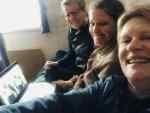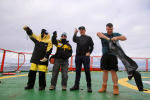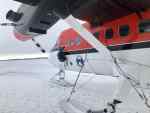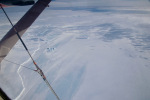Crossing the Southern Ocean
What a two-week Antarctic voyage does:[image error]
Shakes you up
Lays you out
Slows you down
Turns you in.
[image error]
It was a surreal fortnight, carried across 5000km of ocean in the belly of the great metal beast – the Aurora Australis icebreaker – as she counts down the voyages to her retirement. The outer world disappears and daily reality is the little cabin, the long corridors, vast amounts of food served three times a day, ceaseless motion, and the choice to stay in or rug up and go outside. Seasickness tablets and the need for lots of sleep intensify the altered state.



Cabin D30 with me, Jane and Anna (seabird biologist on the way to live on an island with penguins for six weeks) turned into Malory Towers Upper Fourth. Honed our radio skills by creating call signs for each bunk, shared lollies, told stories, took photos, watched movies, giggled a lot and practiced getting into and out of our emergency clothing in less than 45 minutes.



Reaching the ice edge was as incredible as I remembered from last time – the expanse of grey tossing sea turned into the wonder of sea ice and scattered icebergs and the chance to spot whales, penguins, orcas, seabirds and seals.
[image error]After a relatively smooth and easy voyage, we got to Davis in record time. Most voyages were staying at Davis, and the small number of us going to Mawson then waited on the almost uninhabited ship for four or five days for the last part of our journey – but air. It



was a flight I’ll remember forever: two and a half hours in a little twin otter, flying over the Antarctic coastline – the meeting place of the continental ice shelf and the frozen sea. I spotted Scullin Monolith – the landing place of Ingrid Christensen who I wrote about in Chasing the Light – that was pretty special.
Amazing though the trip was, it doesn’t compare to arriving at Mawson Station. On that: more soon.
[image error]



